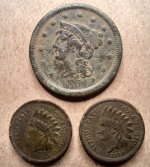diggerdoodah
Jr. Member
- Dec 1, 2013
- 70
- 22
- Primary Interest:
- All Treasure Hunting
Does anyone know keene and prolines pumps actual psi ?
not the gpm can find that every where but can't find the actual psi of any of the pumps.
It would be nice to know to compare and search for other pump with similar psi and gph.
I found a good deal on a honda pump https://powerequipment.honda.com/pumps/models/wh20
spec say max pressure 64 psi. yes gpm is only 119 so i can only figure maybe a 2 1/5 dredge with good suction?
not the gpm can find that every where but can't find the actual psi of any of the pumps.
It would be nice to know to compare and search for other pump with similar psi and gph.
I found a good deal on a honda pump https://powerequipment.honda.com/pumps/models/wh20
spec say max pressure 64 psi. yes gpm is only 119 so i can only figure maybe a 2 1/5 dredge with good suction?





